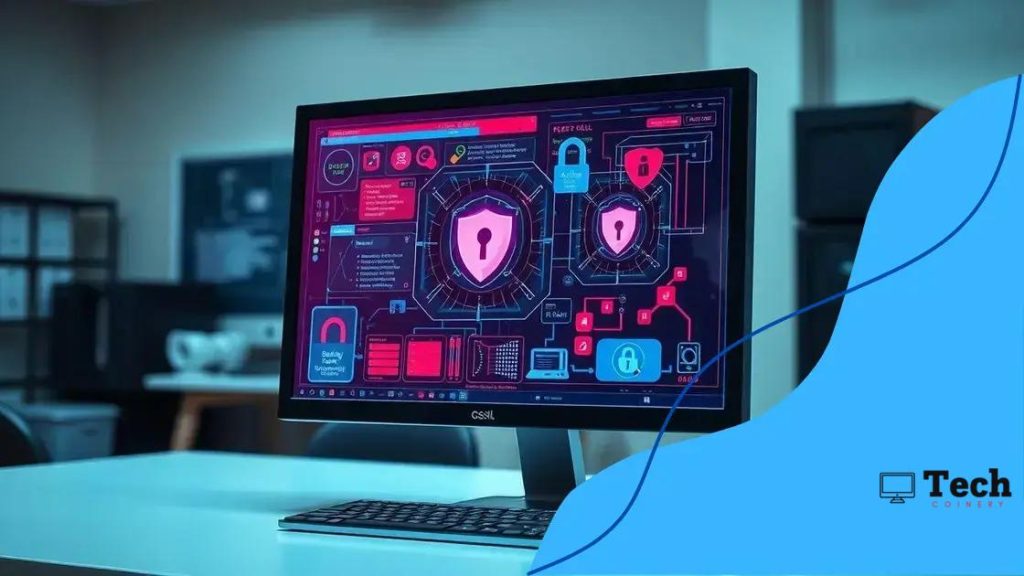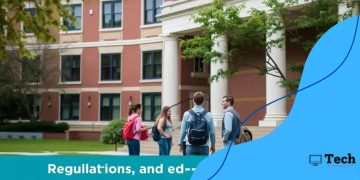Student data privacy protections: safeguarding students’ information

Student data privacy protections are essential for safeguarding personal information in educational settings, ensuring compliance with laws like FERPA and COPPA while promoting transparency and security through best practices.
Student data privacy protections are increasingly important in today’s digital landscape. With schools integrating technology into education, it’s essential to understand how to safeguard students’ personal information. Have you considered what measures are in place to protect data in your child’s school?
Understanding student data privacy
Understanding student data privacy is essential in our technology-driven world. Schools are collecting more data than ever, and protecting this information is crucial for student safety and trust. Let’s explore what this means.
What is student data privacy?
Student data privacy refers to the practices and regulations that safeguard students’ personal information from unauthorized access. This includes everything from their names and addresses to their academic records. The digital age has made it easier to collect this data, but it has also raised concerns about how it is used.
Key components of student data privacy
- Data collection: Understanding what data schools collect helps parents stay informed.
- Data usage: Knowing how that data is used informs families about potential risks.
- Data sharing: Recognizing who has access to this data is essential for privacy.
For instance, when a school uses a new app for learning, it often needs to gather information about students to function effectively. While technology can enhance learning, it is vital to analyze what happens to data after it’s collected. Are third parties involved? This question should be at the forefront of discussions about data privacy.
Moreover, students and parents have rights when it comes to their data. Laws like FERPA (Family Educational Rights and Privacy Act) protect these rights, but families must be vigilant. Understanding these laws helps you advocate for proper handling of your child’s information.
As we navigate this digital landscape, it’s important for everyone involved in education to prioritize student privacy. Schools, families, and tech providers must work together to ensure the information is secured against breaches that could potentially harm students. Awareness and education are key components in effectively safeguarding student data.
Key laws and regulations
Understanding the key laws and regulations surrounding student data privacy is essential for educators and parents alike. These laws help protect students’ personal information from misuse and ensure transparency in how data is handled.
Family Educational Rights and Privacy Act (FERPA)
One of the most important laws is the Family Educational Rights and Privacy Act (FERPA). This law grants parents the right to access their children’s education records and ensures that schools obtain consent before sharing these records with third parties. It’s crucial for families to understand their rights under FERPA to effectively advocate for their children.
Children’s Online Privacy Protection Act (COPPA)
The Children’s Online Privacy Protection Act (COPPA) is another significant regulation that protects the privacy of children under 13. This law requires that websites and online services directed to children obtain verifiable parental consent before collecting personal information. Schools must follow COPPA guidelines when integrating online tools in the classroom.
State-Specific Laws
Many states have their own laws regarding student data privacy, which can vary widely. It’s important for educators to be aware of local laws that may provide additional protections beyond federal regulations. For instance, some states may require schools to implement specific security measures to protect students’ data.
- Data breach notifications: Some states require immediate notification to affected students and families if there’s a data breach.
- Stronger consent requirements: Certain states may have stricter consent laws before data can be shared.
- Local privacy policies: Schools often need to have comprehensive privacy policies in place.
As technology evolves, so do the regulations aimed at protecting students. Staying informed about these laws and regulations is critical for safeguarding students’ personal information. Schools, parents, and students must work together to ensure compliance with these privacy protections, fostering a safer learning environment.
Best practices for schools

Implementing best practices for schools is vital to ensure the protection of student data. By focusing on these strategies, educators can foster a secure learning environment while respecting student privacy.
Establish a Data Privacy Policy
Every school should formulate a clear data privacy policy. This policy informs students, parents, and staff about how data will be collected, used, and protected. A transparent policy fosters trust and ensures everyone is aware of their rights and responsibilities regarding data privacy.
Regular Staff Training
It’s crucial for staff to receive regular training on data privacy practices. This training should cover the importance of protecting student data, recognizing potential threats, and understanding how to report concerns. Empowering staff with knowledge helps create a culture of security within the school.
Use Secure Technology
Schools should invest in secure technology solutions. This includes using software that adheres to privacy regulations, employing encryption for sensitive data, and regularly updating systems to protect against vulnerabilities. Additionally, schools should monitor the technology used within the classroom to ensure it meets safety standards.
- Access controls: Limit access to student data to only authorized personnel.
- Data minimization: Collect only the data that is necessary for educational purposes.
- Incident response plan: Have a plan in place for managing data breaches effectively and quickly.
Engaging students in discussions about the importance of data privacy can also be beneficial. Teaching them about responsible online behavior helps them become aware of their digital footprint. This knowledge will empower them to take steps to protect their own data.
Furthermore, collaboration with parents is essential. Schools should maintain open lines of communication, allowing parents to voice concerns and ask questions about how their children’s data is being managed. This partnership can greatly enhance the effectiveness of data protection efforts.
The role of parents in protecting data
The role of parents in protecting data is critical in today’s digital age. Parents play a key part in ensuring their children’s personal information remains safe and secure. By engaging with schools and understanding privacy practices, they can help shield their kids from potential risks.
Understanding the School’s Privacy Policies
Parents should familiarize themselves with the privacy policies of their child’s school. These policies outline how student data is collected, stored, and shared. By knowing what these policies entail, parents can effectively advocate for their child’s privacy rights and address any concerns with school administrators.
Open Communication with Children
Maintaining open lines of communication with children about their online activities is essential. Parents should encourage their kids to share what apps and websites they are using. Discussing the importance of data privacy helps children understand why it matters and empowers them to make safer decisions online.
- Monitoring online usage: Regularly check the apps and platforms your child uses.
- Setting rules: Establish guidelines for appropriate online behavior, including sharing personal information.
- Educate about privacy: Teach kids to recognize what information should remain private.
By actively participating in conversations about data security, parents can instill a sense of responsibility in their children. They can support their kids in navigating online spaces safely, emphasizing the importance of making wise choices regarding personal information.
In addition to communication, parents should also engage with school initiatives that promote data privacy. Schools may offer workshops or resources that inform families about best practices and legal requirements. Attending these events can give parents the tools and knowledge they need to advocate for their child’s privacy effectively.
Future trends in student data privacy
Future trends in student data privacy are shaping how schools manage and protect information. As technology advances, schools must adapt to keep student data secure while enhancing learning experiences.
Increased Use of Artificial Intelligence
Artificial intelligence is becoming more prevalent in educational settings. AI tools can analyze data to improve teaching methods and student outcomes. However, this raises questions about data security and privacy. Schools will need to implement strict measures to ensure that AI systems protect student information and comply with privacy laws.
Stricter Regulations
As technology evolves, so do the regulations governing data privacy. We can expect new laws to emerge, focusing on the collection and use of student data. Schools must stay informed about these changes to ensure compliance and maintain trust with families. Engaging legal experts may become a common practice for educational institutions.
Enhanced Parental Involvement
Parental involvement in data privacy is likely to increase. As awareness grows, parents will demand more transparency regarding how schools handle their children’s information. Schools will need to establish effective communication channels, providing clear information about data practices.
- Workshops for parents: Offering sessions to educate parents about data privacy issues can build trust and collaboration.
- Privacy advocates: Schools may enlist privacy advocates to help navigate complex regulations and inform parents.
- Feedback loops: Schools might create systems for ongoing feedback from parents about data handling practices.
Furthermore, the integration of privacy-by-design principles will likely become standard practice. By considering privacy from the outset of technology implementation, schools can identify potential risks and mitigate them proactively.
As technology continues to grow and change, the future of student data privacy will remain a vital topic. Schools, parents, and lawmakers will need to work collaboratively to ensure that students remain protected in a digital world.
FAQ – Frequently Asked Questions about Student Data Privacy
What is student data privacy?
Student data privacy refers to the protection of personal information about students, ensuring their data is secure and used responsibly.
What laws protect student data?
Laws like FERPA and COPPA help protect student information by giving parents rights over their child’s educational records and regulating data collection.
How can parents help protect their child’s data?
Parents can engage in open discussions about online activities, attend school workshops, and stay informed about data privacy policies.
What are future trends in student data privacy?
Future trends include increased use of AI, stricter regulations, enhanced parental involvement, and prioritizing privacy-by-design practices in schools.






